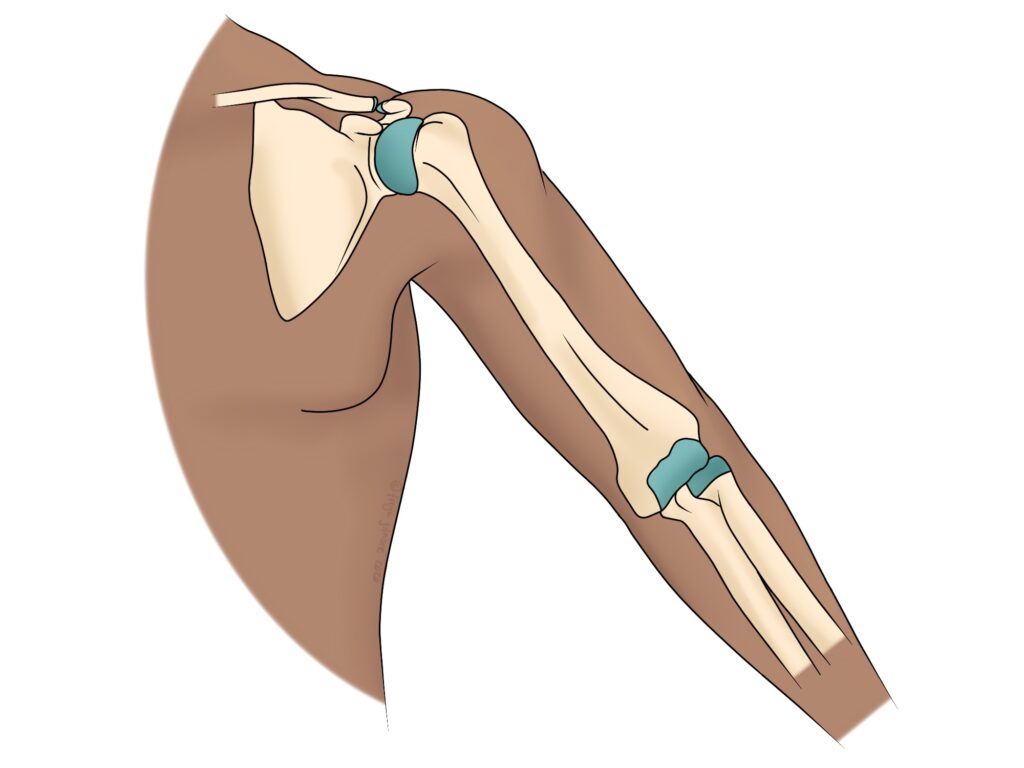Beverley has a special interest in shoulder problems and she is qualified to diagnose and treat a range of conditions, some of which are detailed below.
Scapulothoracic Maltracking
This mouthful of a diagnosis is just a fancy way of talking about the way the shoulder blade moves. The shoulder complex is unusual in that it has a few major connections to the rest of the skeleton. The benefit of this is that the area is very mobile, but a drawback is that sometimes this mobility can present issues.
If the shoulder blade moves in a way it shouldn’t, you might develop:
- achiness in the shoulder and into the neck or upper back
- repetitive (but usually painless) clicking when you move your shoulder
- a rounded shoulder that does not want to stay back
Although the clicking in particular can be worrying at first, it is usually an easy problem to resolve. First we will look at the whole problem, and work out why it has happened in the first place. Often there is an association with your daily activities, such as adopting an imperfect position at your desk or while driving. In areas like the shoulder where there is a lot of movement, we can use muscle strengthening techniques to help support the problematic structures.

Acromioclavicular (AC) Sprains
The AC joint is the one between the collar bone and the shoulder blade (shown in the illustration above). It is supported by a number of ligaments, which can be sprained by trauma or repetitive overuse. This is a common injury, affecting about 1% of athletes in any given year. Sprains are damage to ligaments when they have been stretched beyond their capacity. As a result, they can cause some degree of joint laxity, although this may not be immediately obvious if the sprain is only mild. While the most severe sprains require surgery, milder sprains can respond well to Osteopathic treatment and rehabilitation.
If you suspect you have sprained your AC joint, you can reduce swelling by applying a cool compress for no more than 10 minutes per hour. A certain amount of inflammation is a good thing- it brings nutrients to the area and allows the body to clear damaged tissue. Some resources recommend a sling, but evidence suggests that unnecessary immobilisation can predispose a person to developing frozen shoulder. We also know that gradually increasing movement throughout the recovery process is important to allow the ligaments to heal as strongly as possible.
Beverley can support you in working out how much movement is sensible, as well as helping to reduce excess inflammation. She will look beyond the joint to see if other areas have begun to compensate, and treat those areas as well to prevent secondary issues.
Shoulder Muscles: Rotator Cuff Injuries
The rotator cuff is a group of four muscles that rotate the shoulder. They can be injured by throwing sports or more direct trauma, and are associated with pain and weakness on rotation. Like sprains, muscle strains are rated by their severity. Mild strains may cause some local tenderness or light swelling; but more severe cases can be felt as a dip where the muscle has torn. Incidence increases with age as there is a degenerative factor to the condition.
Early intervention is key, as restoring movement as soon as possible will allow the fibres to knit together more easily. Beverley can help to make the area more comfortable so you are able to move as you need to. As part of your management plan, she will build a rehabilitation programme for you, covering treatment and exercise. If your injury is associated with sports, she can offer advice on how to prevent similar injuries in the future.
Other Shoulder Problems
These examples are just a handful of conditions Beverley may be able to help with. Stay tuned for dedicated posts on frozen shoulder and tennis elbow.
Click here to make an appointment for your shoulder with Beverley Palmer.
